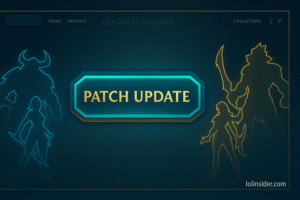In League of Legends, small details often decide victory or defeat. Among the most critical aspects of gameplay are runes and item builds, which adapt with every patch and meta shift. For new and veteran players alike, keeping up with the best builds can be overwhelming. That’s where tools to track rune and item usage come in handy.
These resources provide real-time data, pro player builds, and statistics that help you optimize your champion performance. Whether you’re learning a new champion or preparing for ranked grind, the right tools will guide you toward efficient and effective setups.
🔎 Why Tracking Rune and Item Usage Matters
- Meta Shifts Every Patch
Balance updates change champion win rates, rune priorities, and item efficiency. Tools keep you updated. - Improves Consistency
Using the right build for your role and matchup ensures stable performance, even when behind. - Learn from the Pros
Most trackers integrate professional esports builds, letting you copy strategies from top players. - Time-Saving
Instead of testing dozens of builds, you can quickly access data-driven setups that are proven effective.
📊 Best Tools to Track Rune and Item Usage
Here’s a breakdown of the most reliable platforms:
1. OP.GG
- Features:
- Global champion stats with top runes and items.
- Ranked by win rate, pick rate, and ban rate.
- Import builds directly into the client.
- Why use it? Quick, easy-to-read builds based on massive data samples.
2. U.GG
- Features:
- Tier lists, champion stats, and matchup-specific runes.
- Pro builds and patch-specific recommendations.
- Live game lookup for scouting.
- Why use it? Clean design and accurate win rate-based suggestions.
3. Porofessor.gg
- Features:
- In-game overlay showing runes, items, and skill paths.
- Suggests situational item swaps.
- Provides scouting for enemy matchups.
- Why use it? Real-time, in-game tracking without tabbing out.
4. Blitz.gg
- Features:
- Automatic import of recommended runes and items.
- Performance tracking across multiple games.
- Esports build database.
- Why use it? Perfect for players who want automation—no manual setup required.
5. Mobalytics
- Features:
- Detailed rune and item breakdowns per role.
- GPI (Gamer Performance Index) to analyze personal weaknesses.
- Regular guides and coaching tools.
- Why use it? Great for players wanting deeper insights into improvement beyond builds.
6. League of Graphs
- Features:
- Statistical breakdown of most popular and effective builds.
- Graphs showing rune/item win rates by patch.
- Global player usage data.
- Why use it? Ideal for stat lovers who want detailed charts and trends.
🧠 How to Use Rune & Item Tracking Tools Effectively
- Check before each patch: Don’t assume old builds still work.
- Matchup-specific adjustments: Tools often list alternative rune pages/items depending on enemy champs.
- Balance consistency and flexibility: Use default builds as a foundation, but adapt situationally in-game.
- Follow high-ELO/pro builds: These players often innovate before data catches up.
🏆 Which Tool Should You Use?
- For beginners: OP.GG or U.GG (simple, data-driven).
- For in-game help: Porofessor or Blitz.
- For deep improvement: Mobalytics.
- For stats enthusiasts: League of Graphs.
📝 Final Thoughts
Mastering League of Legends requires more than mechanics—it requires preparation. With the right tools to track rune and item usage, you’ll always stay ahead of meta shifts and optimize your gameplay. Whether you prefer simple build imports or advanced analytics, these platforms ensure you’re never left behind when patches roll out.
Remember: while tools provide guidance, adapting to in-game situations will always separate good players from great ones.







